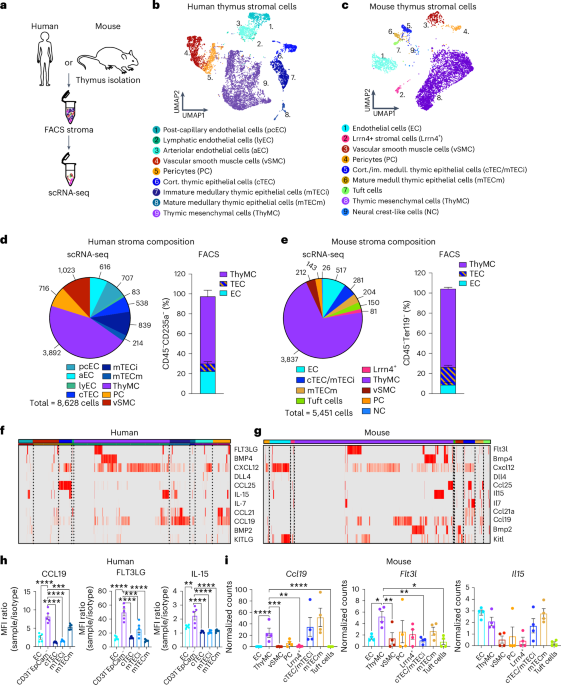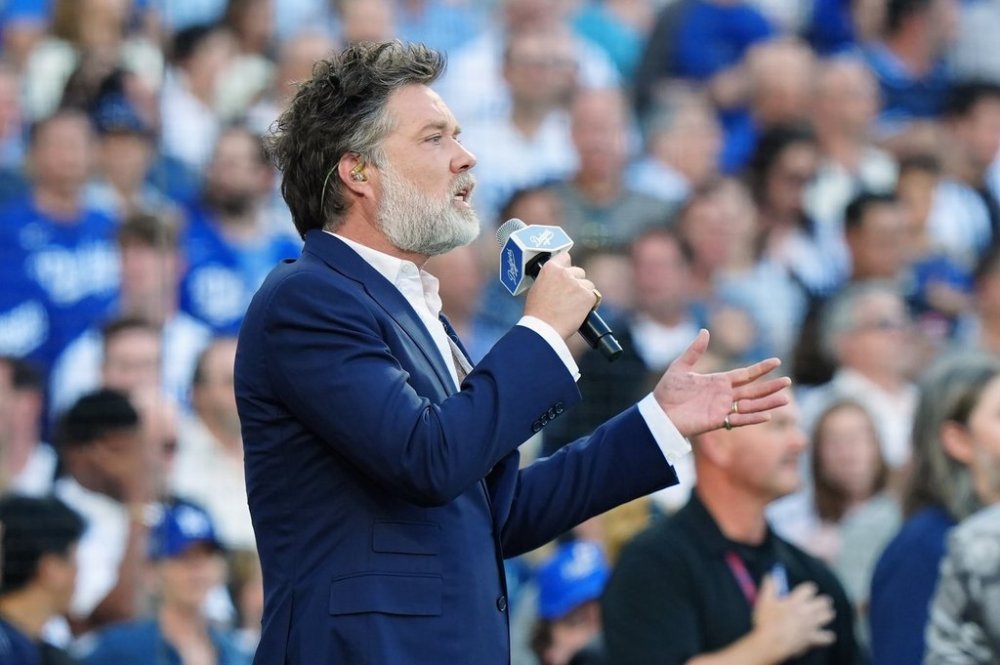Palmer, S., Albergante, L., Blackburn, C. C. & Newman, T. J. Thymic involution and rising disease incidence with age. Proc. Natl Acad. Sci. USA 115, 1883–1888 (2018).
Google Scholar
Wang, W., Thomas, R., Sizova, O. & Su, D. M. Thymic function associated with cancer development, relapse, and antitumor immunity—a mini-review. Front. Immunol. 11, 773 (2020).
Google Scholar
Yoshida, K. et al. Aging-related changes in human T-cell repertoire over 20years delineated by deep sequencing of peripheral T-cell receptors. Exp. Gerontol. 96, 29–37 (2017).
Google Scholar
Egorov, E. S. et al. The changing landscape of naive T cell receptor repertoire with human aging. Front. Immunol. 9, 1618 (2018).
Google Scholar
Kooshesh, K. A., Foy, B. H., Sykes, D. B., Gustafsson, K. & Scadden, D. T. Health consequences of thymus removal in adults. N. Engl. J. Med. 389, 406–417 (2023).
Google Scholar
Bosch, M., Khan, F. M. & Storek, J. Immune reconstitution after hematopoietic cell transplantation. Curr. Opin. Hematol. 19, 324–335 (2012).
Google Scholar
Curtis, R. E. et al. Solid cancers after bone marrow transplantation. N. Engl. J. Med. 336, 897–904 (1997).
Google Scholar
Maraninchi, D. et al. Impact of T-cell depletion on outcome of allogeneic bone-marrow transplantation for standard-risk leukaemias. Lancet 2, 175–178 (1987).
Google Scholar
Storek, J., Gooley, T., Witherspoon, R. P., Sullivan, K. M. & Storb, R. Infectious morbidity in long-term survivors of allogeneic marrow transplantation is associated with low CD4 T cell counts. Am. J. Hematol. 54, 131–138 (1997).
Google Scholar
Blazar, B. R., Murphy, W. J. & Abedi, M. Advances in graft-versus-host disease biology and therapy. Nat. Rev. Immunol. 12, 443–458 (2012).
Google Scholar
Small, T. N. et al. Comparison of immune reconstitution after unrelated and related T-cell-depleted bone marrow transplantation: effect of patient age and donor leukocyte infusions. Blood 93, 467–480 (1999).
Google Scholar
Petrie, H. T. & Zuniga-Pflucker, J. C. Zoned out: functional mapping of stromal signaling microenvironments in the thymus. Annu. Rev. Immunol. 25, 649–679 (2007).
Google Scholar
Takahama, Y. Journey through the thymus: stromal guides for T-cell development and selection. Nat. Rev. Immunol. 6, 127–135 (2006).
Google Scholar
Bleul, C. C. & Boehm, T. Chemokines define distinct microenvironments in the developing thymus. Eur. J. Immunol. 30, 3371–3379 (2000).
Google Scholar
Felli, M. P. et al. Expression pattern of Notch1, 2 and 3 and Jagged1 and 2 in lymphoid and stromal thymus components: distinct ligand–receptor interactions in intrathymic T cell development. Int. Immunol. 11, 1017–1025 (1999).
Google Scholar
Antonia, S. J., Geiger, T., Miller, J. & Flavell, R. A. Mechanisms of immune tolerance induction through the thymic expression of a peripheral tissue-specific protein. Int. Immunol. 7, 715–725 (1995).
Google Scholar
Lo, D. & Sprent, J. Identity of cells that imprint H-2-restricted T-cell specificity in the thymus. Nature 319, 672–675 (1986).
Google Scholar
Liston, A., Lesage, S., Wilson, J., Peltonen, L. & Goodnow, C. C. Aire regulates negative selection of organ-specific T cells. Nat. Immunol. 4, 350–354 (2003).
Google Scholar
Buono, M. et al. A dynamic niche provides Kit ligand in a stage-specific manner to the earliest thymocyte progenitors. Nat. Cell Biol. 18, 157–167 (2016).
Google Scholar
Wertheimer, T. et al. Production of BMP4 by endothelial cells is crucial for endogenous thymic regeneration. Sci. Immunol. 3, eaal2736 (2018).
Buono, M., Thezenas, M. L., Ceroni, A., Fischer, R. & Nerlov, C. Bi-directional signaling by membrane-bound KitL induces proliferation and coordinates thymic endothelial cell and thymocyte expansion. Nat. Commun. 9, 4685 (2018).
Google Scholar
Dudakov, J. A. et al. Interleukin-22 drives endogenous thymic regeneration in mice. Science 336, 91–95 (2012).
Google Scholar
Kim, S., Shah, S. B., Graney, P. L. & Singh, A. Multiscale engineering of immune cells and lymphoid organs. Nat. Rev. Mater. 4, 355–378 (2019).
Google Scholar
Pievani, A. et al. Harnessing mesenchymal stromal cells for the engineering of human hematopoietic niches. Front. Immunol. 12, 631279 (2021).
Google Scholar
Seandel, M. et al. Generation of a functional and durable vascular niche by the adenoviral E4ORF1 gene. Proc. Natl Acad. Sci. USA 105, 19288–19293 (2008).
Google Scholar
Amagai, T., Itoi, M. & Kondo, Y. Limited development capacity of the earliest embryonic murine thymus. Eur. J. Immunol. 25, 757–762 (1995).
Google Scholar
Anderson, G., Anderson, K. L., Tchilian, E. Z., Owen, J. J. & Jenkinson, E. J. Fibroblast dependency during early thymocyte development maps to the CD25+ CD44+ stage and involves interactions with fibroblast matrix molecules. Eur. J. Immunol. 27, 1200–1206 (1997).
Google Scholar
Itoi, M. & Amagai, T. Inductive role of fibroblastic cell lines in development of the mouse thymus anlage in organ culture. Cell Immunol. 183, 32–41 (1998).
Google Scholar
Jenkinson, W. E., Rossi, S. W., Parnell, S. M., Jenkinson, E. J. & Anderson, G. PDGFRα-expressing mesenchyme regulates thymus growth and the availability of intrathymic niches. Blood 109, 954–960 (2007).
Google Scholar
Suniara, R. K., Jenkinson, E. J. & Owen, J. J. An essential role for thymic mesenchyme in early T cell development. J. Exp. Med. 191, 1051–1056 (2000).
Google Scholar
Gray, D. H. et al. A unique thymic fibroblast population revealed by the monoclonal antibody MTS-15. J. Immunol. 178, 4956–4965 (2007).
Google Scholar
Patenaude, J. & Perreault, C. Thymic mesenchymal cells have a distinct transcriptomic profile. J. Immunol. 196, 4760–4770 (2016).
Google Scholar
Handel, A. E. et al. Developmental dynamics of the neural crest-mesenchymal axis in creating the thymic microenvironment. Sci. Adv. 8, eabm9844 (2022).
Google Scholar
Nitta, T. & Takayanagi, H. Non-epithelial thymic stromal cells: unsung heroes in thymus organogenesis and T cell development. Front. Immunol. 11, 620894 (2020).
Google Scholar
Sun, L. et al. FSP1+ fibroblast subpopulation is essential for the maintenance and regeneration of medullary thymic epithelial cells. Sci. Rep. 5, 14871 (2015).
Google Scholar
Nitta, T. et al. Fibroblasts as a source of self-antigens for central immune tolerance. Nat. Immunol. 21, 1172–1180 (2020).
Google Scholar
Bornstein, C. et al. Single-cell mapping of the thymic stroma identifies IL-25-producing tuft epithelial cells. Nature 559, 622–626 (2018).
Google Scholar
Park, J. E. et al. A cell atlas of human thymic development defines T cell repertoire formation. Science 367, eaay3224 (2020).
Kanamori-Katayama, M. et al. LRRN4 and UPK3B are markers of primary mesothelial cells. PLoS ONE 6, e25391 (2011).
Google Scholar
Erickson, A. G., Kameneva, P. & Adameyko, I. The transcriptional portraits of the neural crest at the individual cell level. Semin. Cell Dev. Biol. 138, 68–80 (2022).
Google Scholar
Foster, K. et al. Contribution of neural crest-derived cells in the embryonic and adult thymus. J. Immunol. 180, 3183–3189 (2008).
Google Scholar
Muller, S. M. et al. Neural crest origin of perivascular mesenchyme in the adult thymus. J. Immunol. 180, 5344–5351 (2008).
Google Scholar
Grueneberg, D. A., Natesan, S., Alexandre, C. & Gilman, M. Z. Human and Drosophila homeodomain proteins that enhance the DNA-binding activity of serum response factor. Science 257, 1089–1095 (1992).
Google Scholar
Plotkin, J., Prockop, S. E., Lepique, A. & Petrie, H. T. Critical role for CXCR4 signaling in progenitor localization and T cell differentiation in the postnatal thymus. J. Immunol. 171, 4521–4527 (2003).
Google Scholar
Kenins, L., Gill, J. W., Boyd, R. L., Hollander, G. A. & Wodnar-Filipowicz, A. Intrathymic expression of Flt3 ligand enhances thymic recovery after irradiation. J. Exp. Med. 205, 523–531 (2008).
Google Scholar
Sitnicka, E. et al. Key role of flt3 ligand in regulation of the common lymphoid progenitor but not in maintenance of the hematopoietic stem cell pool. Immunity 17, 463–472 (2002).
Google Scholar
Zlotoff, D. A. et al. CCR7 and CCR9 together recruit hematopoietic progenitors to the adult thymus. Blood 115, 1897–1905 (2010).
Google Scholar
Gordy, L. E. et al. IL-15 regulates homeostasis and terminal maturation of NKT cells. J. Immunol. 187, 6335–6345 (2011).
Google Scholar
Haunerdinger, V. et al. Novel combination of surface markers for the reliable and comprehensive identification of human thymic epithelial cells by flow cytometry: quantitation and transcriptional characterization of thymic stroma in a pediatric cohort. Front. Immunol. 12, 740047 (2021).
Google Scholar
Lax, S. et al. CD248 expression on mesenchymal stromal cells is required for post-natal and infection-dependent thymus remodelling and regeneration. FEBS Open Bio 2, 187–190 (2012).
Google Scholar
Coutu, D. L., Kokkaliaris, K. D., Kunz, L. & Schroeder, T. Three-dimensional map of nonhematopoietic bone and bone-marrow cells and molecules. Nat. Biotechnol. 35, 1202–1210 (2017).
Google Scholar
Zhu, D., Mackenzie, N. C., Millan, J. L., Farquharson, C. & MacRae, V. E. The appearance and modulation of osteocyte marker expression during calcification of vascular smooth muscle cells. PLoS ONE 6, e19595 (2011).
Google Scholar
Steinmann, G. G. Changes in the human thymus during aging. Curr. Top. Pathol. 75, 43–88 (1986).
Google Scholar
Steinmann, G. G., Klaus, B. & Muller-Hermelink, H. K. The involution of the ageing human thymic epithelium is independent of puberty. A morphometric study. Scand. J. Immunol. 22, 563–575 (1985).
Google Scholar
Yoshida, R. et al. Molecular cloning of a novel human CC chemokine EBI1-ligand chemokine that is a specific functional ligand for EBI1, CCR7. J. Biol. Chem. 272, 13803–13809 (1997).
Google Scholar
Seyedhassantehrani, N. et al. Intravital two-photon microscopy of the native mouse thymus. PLoS ONE 19, e0307962 (2024).
Google Scholar
Sanos, S. L., Nowak, J., Fallet, M. & Bajenoff, M. Stromal cell networks regulate thymocyte migration and dendritic cell behavior in the thymus. J. Immunol. 186, 2835–2841 (2011).
Google Scholar
Le Borgne, M. et al. The impact of negative selection on thymocyte migration in the medulla. Nat. Immunol. 10, 823–830 (2009).
Google Scholar
Qi, Q. et al. Diversity and clonal selection in the human T-cell repertoire. Proc. Natl Acad. Sci. USA 111, 13139–13144 (2014).
Google Scholar
Diao, S. H. et al. Biological imaging without autofluorescence in the second near-infrared region. Nano Res. 8, 3027–3034 (2015).
Google Scholar
Baryawno, N. et al. A cellular taxonomy of the bone marrow stroma in homeostasis and leukemia. Cell 177, 1915–1932 (2019).
Google Scholar
Ding, L., Saunders, T. L., Enikolopov, G. & Morrison, S. J. Endothelial and perivascular cells maintain haematopoietic stem cells. Nature 481, 457–462 (2012).
Google Scholar
Raaijmakers, M. H. et al. Bone progenitor dysfunction induces myelodysplasia and secondary leukaemia. Nature 464, 852–857 (2010).
Google Scholar
Severe, N. et al. Stress-induced changes in bone marrow stromal cell populations revealed through single-cell protein expression mapping. Cell Stem Cell 25, 570–583 (2019).
Google Scholar
Calvi, L. M. et al. Osteoblastic cells regulate the haematopoietic stem cell niche. Nature 425, 841–846 (2003).
Google Scholar
Himburg, H. A. et al. Pleiotrophin regulates the expansion and regeneration of hematopoietic stem cells. Nat. Med. 16, 475–482 (2010).
Google Scholar
Chute, J. P. et al. Transplantation of vascular endothelial cells mediates the hematopoietic recovery and survival of lethally irradiated mice. Blood 109, 2365–2372 (2007).
Google Scholar
Awong, G. et al. Human proT-cells generated in vitro facilitate hematopoietic stem cell-derived T-lymphopoiesis in vivo and restore thymic architecture. Blood 122, 4210–4219 (2013).
Google Scholar
Eggenhofer, E. et al. Mesenchymal stem cells are short-lived and do not migrate beyond the lungs after intravenous infusion. Front. Immunol. 3, 297 (2012).
Google Scholar
Muschler, G. F. et al. Selective retention of bone marrow-derived cells to enhance spinal fusion. Clin. Orthop. Relat. Res. 242−251 (2005).
Wolock, S. L., Lopez, R. & Klein, A. M. Scrublet: computational identification of cell doublets in single-cell transcriptomic data. Cell Syst. 8, 281–291 (2019).
Google Scholar
Barkas, N. et al. Joint analysis of heterogeneous single-cell RNA-seq dataset collections. Nat. Methods 16, 695–698 (2019).
Google Scholar
Wolf, F. A., Angerer, P. & Theis, F. J. SCANPY: large-scale single-cell gene expression data analysis. Genome Biol. 19, 15 (2018).
Google Scholar
Traag, V. A., Waltman, L. & van Eck, N. J. From Louvain to Leiden: guaranteeing well-connected communities. Sci. Rep. 9, 5233 (2019).
Google Scholar
Love, M. I., Huber, W. & Anders, S. Moderated estimation of fold change and dispersion for RNA-seq data with DESeq2. Genome Biol. 15, 550 (2014).
Google Scholar
Chen, E. Y. et al. Enrichr: interactive and collaborative HTML5 gene list enrichment analysis tool. BMC Bioinformatics 14, 128 (2013).
Google Scholar
Subramanian, A. et al. Gene set enrichment analysis: a knowledge-based approach for interpreting genome-wide expression profiles. Proc. Natl Acad. Sci. USA 102, 15545–15550 (2005).
Google Scholar
Ashburner, M. et al. Gene Ontology: tool for the unification of biology. Nat. Genet. 25, 25–29 (2000).
Google Scholar
Chevalier, C., Nicolas, J. F. & Petit, A. C. Preparation and delivery of 4-hydroxy-tamoxifen for clonal and polyclonal labeling of cells of the surface ectoderm, skin, and hair follicle. Methods Mol. Biol. 1195, 239–245 (2014).
Google Scholar
Yu, V. W. et al. Specific bone cells produce DLL4 to generate thymus-seeding progenitors from bone marrow. J. Exp. Med. 212, 759–774 (2015).
Google Scholar
Gustafsson, K. & Scadden, D. T. Isolation of thymus stromal cells from human and murine tissue. Methods Mol. Biol. 2567, 191–201 (2023).
Google Scholar
Shah, N. J. et al. An injectable bone marrow-like scaffold enhances T cell immunity after hematopoietic stem cell transplantation. Nat. Biotechnol. 37, 293–302 (2019).
Google Scholar
Lynch, H. E. & Sempowski, G. D. Molecular measurement of T cell receptor excision circles. Methods Mol. Biol. 979, 147–159 (2013).
Google Scholar
Kokkaliaris, K. D. et al. Adult blood stem cell localization reflects the abundance of reported bone marrow niche cell types and their combinations. Blood 136, 2296–2307 (2020).
Google Scholar
Preibisch, S., Saalfeld, S. & Tomancak, P. Globally optimal stitching of tiled 3D microscopic image acquisitions. Bioinformatics 25, 1463–1465 (2009).
Google Scholar
Mirsanaye, K., Gustafsson, K. & Lin, C. Three-photon fluorescence images used in the manuscript titled: “Mesenchymal thymic niche cells enable regeneration of the adult thymus and T cell immunity.”. Zenodo https://doi.org/10.5281/zenodo.15278001 (2025).



